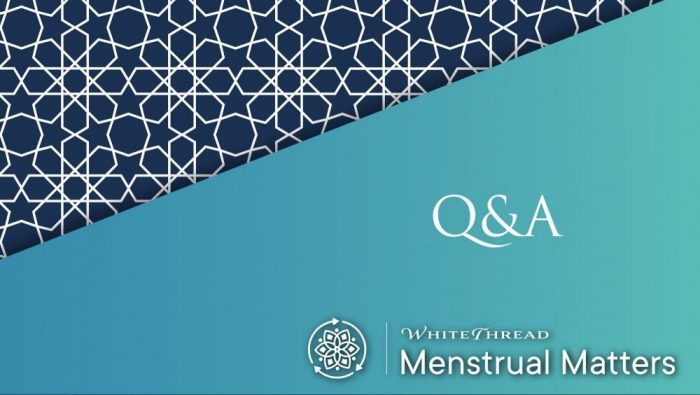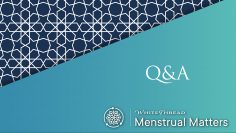
General Rulings on Hayd
Assalamu Alaikum Warahmatullahi Wabarakatuhu.
I have a medical condition which requires me getting treated for a chest infection from time to time.
The antibiotics I have vary and I found one antibiotic to affect my period.
This recent time; when I was due to start my period, I saw blood like normal. But then I didn’t see blood for a long while, like several days. It was less than 3 days that I saw blood which classes as istihadhaa I know but with other factors I didn’t know the full answer;
1) it was definitely the right time for my period.
2) it felt like a normal period just with no blood for majority of the days.
3) I did ghusl on the 7th day (because my aadat is usually 6/7 days) and started my Salah even though I didn’t see the same end signs I usually do because I thought the antibiotics was affecting that too.
But on the 8th day, the doctors changed my antibiotics, and today on the 9th day I saw a small amount of brown discharge as I was going to do wudhu for Maghrib. So now I will do ghusl again and continue Salah InSha’Allah.
But I have some questions please;
what is the ruling for the days where I didn’t see blood but felt like I was on my period?
Does it class as istihadhaa still and so should I have read my salah as normal after not seeing blood after the third day and done Qadha of the three days?
Does the brown discharge mean anything here in a case like this?
And outside of antibiotics, during my normal aadat, every time, I see at least one day and maximum two days without blood before I see a last few drops of blood and then discharge at the end of my period, is it correct that I don’t read Salah in them bloodless days?
Jazakallahu Khair for your time and help.
Answer
In the name of Allah, the Inspirer of truth
Regarding your question about the days when there was an absence of blood but it felt like you were on your period:
If there was blood before and after the days when there was an absence of blood, it will all be considered hayd IF this was during your habitual place and the total occurrence was 72 hours or more. If this was not your habitual place or you are unsure, please send in a follow up question with the dates of your past three cycles.
If there was no blood (blood can be coloured discharge and spotting) before the days in which you felt like you were on your period, it will be regarded as purity even if you felt like you were on your period. Any salat missed during these days must be made up (qada).
Your second question was about the blood – whether it is irregular bleeding (istihada) or menstruation (hayd):
Any blood/coloured discharge/spotting seen during the days of hayd will be considered hayd as long as the blood was experienced for the minimum duration of three days and three nights (72 hours) and it did not go over the maximum duration of ten days and ten nights (240 hours). If the blood stopped before 72 hours and did not return for fifteen days or more, the blood will be classified as istihada.
Whenever blood stops before 72 hours we must continue to pray salat. Since it is less than the minimum, there is no need to take a ritual bath (ghusl) before praying. Regarding salat during these days, we must check for blood near the ending of each salat’s preferable (mustahab) time. Check for blood such that salat can be completed before the disliked (makrooh) time begins.
If there is blood at this time, do not pray. However, if there isn’t any blood, make ablution (wudu) and pray. This will be done for the first 72 hours if the blood continues. If the blood continues beyond 72 hours, a ritual bath (ghusl) should be taken it stops. We must check near the ending of that salat’s mustahab time. Check at such a time that ghusl and salat can be completed before makrooh time begins. If there is blood at this time, do not pray. But if there isn’t any blood then take ghusl and complete the salat before the makrooh time begins.
If the blood stopped before 72 hours, you will have to make qada of the salat missed during this time as any blood less than 72 hours cannot be hayd.
According to what you have mentioned it seems as though you had blood, a few days of no blood, then again blood. This will all be considered hayd as long as it does not exceed 10 days and nights.
Your third question about brown discharge:
Any coloured discharge in the habitual days of bleeding, other than clear or white, is considered hayd. As long as the bleeding is 72 hours to 240 hours and has occurred after a complete purity of 15 days and nights or during one’s habitual place, colours such as black, brown, green, yellow, and red are hayd. When looking at the colour of discharge, it is important that it is fresh and wet. If the discharge is seen when it has dried, it has undergone a chemical reaction, altering its colour.
Your last question regarding salat during the days in which there is an absence of blood for a day or two toward the ending of hayd:
Once the blood/coloured discharge stops you will take ghusl and follow what has been explained above in response to your second question. If after making ghusl, the blood returns within 10 days and nights, you must perform ghusl again. If the blood returns and it exceeds the maximum 10 days and nights then only your habitual days will be considered hayd and the remaining days will be istihada.
You have mentioned that you had brown spotting on the ninth day. As long as this blood stops within 10 days and nights, this will all be considered as hayd. However, if the blood returns after the tenth day (240 hours) OR after it stopped before 240 hours but returns before a complete purity of 15 days and nights, you will need to refer to your last valid blood and purity to determine what is hayd and what is istihada. If this occurs, please send us another email with your last three cycle dates (starting and ending of blood dates). If there was any spotting or coloured discharge during the purity days, please mention those dates also.
And Allah knows best.



